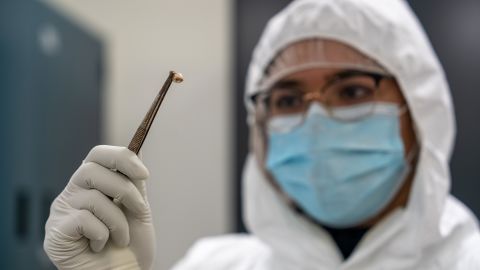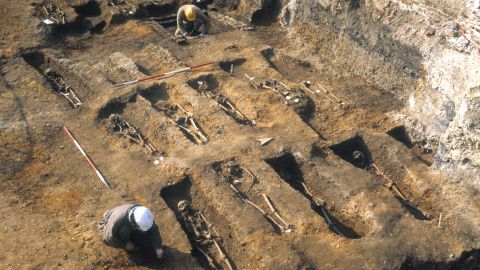
CNN – The Black Death, the world’s most devastating plague outbreak, killed half of medieval Europe’s population in the space of seven years in the 14th century, shifting the course of human history.
But what about the survivors of what remains the single greatest mortality event ever recorded? New research published Wednesday in the journal Nature suggests it was more than luck that determined who lived and who died.
Analysis of centuries-old DNA from both victims and survivors of the Black Death has identified key genetic differences that helped people survive the plague, according to a study published in the journal Nature.
These genetic differences continue to shape human immune systems today, with genes that once conferred protection against the plague now linked to a greater vulnerability to autoimmune diseases such as Crohn’s and rheumatoid arthritis, the study said.

“We are the descendants of those that survived past pandemics … and understanding the evolutionary mechanisms that contributed to our survival is not only important from a scientific viewpoint, but can also inform on the mechanisms and genetic determinants of present-day susceptibility to disease,” said study coauthor Luis Barreiro, a professor of genetic medicine at University of Chicago, via email.
Plague pit specimens
The seven-year study involved the extraction of DNA isolated from three different groups of skeletal remains unearthed in London and Denmark: Plague victims, those who died before the Black Death and those who died between 10 and 100 years after the plague struck.
More than 300 samples came from London, a city hit particularly hard by the plague, including from individuals buried in the East Smithfield plague pits used for mass burials at the height of the outbreak in 1348-1349. Another 198 samples were taken from human remains buried in five locations in Denmark.
DNA was extracted from dentine in the roots of individuals’ teeth, and researchers were also able to check for the presence of Yersinia pestis, the bacterium that causes plague. They then searched for signs of genetic adaption to the disease.
“It’s a LONG process, but in the end you have the sequence of those genes for those people from before, during and after the plague and you can ask: Do the genes one population carried looked different than the ones another population carried,” said coauthor Hendrik Poinar, a professor of anthropology at McMaster University in Hamilton, Ontario in an email.
The team pinpointed a variant of one particular gene, known as ERAP 2, that appeared to have a strong association with the plague. Before the Black Death, the variant of ERAP2 found to be protective of the plague was found in 40% of individuals included in the London study. After the Black Death, it was 50%. In Denmark, the percentile disparity was starker — it changed from about 45% of samples buried before the plague to 70% buried afterwards.
The team don’t yet know exactly why this variant conferred protection, but their lab experiments in cultured cells indicated that, in people with the ERAP 2 variant, an immune cell known as a macrophage provoked a very different response to Yersinia pestis, Barreiro explained. Macrophages from individuals with the variant were better able to kill the bacteria in lab experiments than from macrophages from individuals lacking it.
“We do not know if it still protects against the plague given that the number of cases in present day populations is very low but we speculated that it should,” he said. It’s also likely that the variant is beneficial against other pathogens — although this wasn’t part of the research.

Price of immunity
The downside to the variant is that it has been linked to a greater susceptibility to autoimmune disorders, such as Crohn’s disease, where the immune system becomes overactive.
“This suggests that populations that survived the Black Death paid a price, which is to have an immune system that increases our susceptibility to react against ourselves,” Barreiro said.
He said that it was unlikely that Covid-19 outbreak would shape our immune system in a similar way — largely because the disease predominantly kills people after their reproductive age, meaning it’s unlikely genes that confer protection would be passed on to the next generation.
This change in human genetic makeup occurring in a matter of decades is also a rare example of rapid natural selection, said David Enard, a professor in the University of Arizona’s department of ecology and evolutionary biology, who was not involved in the research.
“The narrow time window from which samples were taken, and the large number of samples analysed, are selling points of the study, he said in a commentary published alongside the study, “allowing the authors to accurately date natural selection.”
“Even though evolutionary biologists had previously wondered about the possibility of natural selection during the Black Death, proper investigation was not possible without this precise dating of many samples.”




